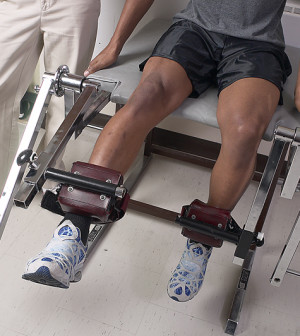- Navigating Your Midlife Crisis: Embracing New Possibilities
- City Raccoons Showing Signs of Domestication
- Mapping the Exposome: Science Broadens Focus to Environmental Disease Triggers
- One Week Less on Social Media Linked to Better Mental Health
- Your Brain Changes in Stages as You Age, Study Finds
- Some Suicide Victims Show No Typical Warning Signs, Study Finds
- ByHeart Formula Faces Lawsuits After Babies Sickened With Botulism
- Switch to Vegan Diet Could Cut Your Greenhouse Gas Emissions in Half
- Regular Bedtime Does Wonders for Blood Pressure
- Dining Alone Could Mean Worse Nutrition for Seniors
Severe Burns May Trigger Dangerous Shifts in Gut Germs


People who suffer severe burns may experience potentially dangerous changes in the 100 trillion bacteria inside their gastrointestinal (GI) tract, a small study suggests.
At issue is the breakdown of good and bad bacteria typically found inside a healthy person’s GI tract.
Researchers from the health sciences division of Loyola University Chicago in Maywood, Ill., observed that after a severe burn, four patients experienced a big increase in the number of potentially harmful bacteria and a corresponding drop in relatively beneficial bacteria.
The potentially harmful bacteria are part of a family that includes E. coli and salmonella.
Such an imbalance, known as “dysbiosis,” has been linked to many conditions, including inflammatory bowel disease, obesity, rheumatoid arthritis and diabetes, study lead author Dr. Mashkoor Choudhry, a professor of surgical research, microbiology and immunology, said in a Loyola news release. He added that the imbalances might lead to complications responsible for most deaths in severe burn patients.
The findings, published in the July 8 issue of PLOS ONE, suggest that treating patients with live beneficial bacteria known as probiotics may help restore their microbiotic health. The findings might also apply to other trauma patients, including those with traumatic brain injuries, Choudhry said.
The risk for dysbiosis was discovered after Choudhry’s team analyzed fecal samples from the four patients with severe burns. The samples, taken five to 17 days after the patients were injured, were compared with samples from eight patients recovering from relatively minor burns.
The result: Bad bacteria made up an average of nearly 32 percent of the bacteria in the gut of the severely burned patients, compared with 0.5 percent among patients with lesser burns.
The study had several limitations. It was small, with only four participants with severe burns. And it only uncovered an association between severe burns and an impact on gut bacteria; it didn’t prove a cause-and-effect relationship.
More information
Learn more about gut microbes at
U.S. National Center for BiotechnologyInformation.
Source: HealthDay
Copyright © 2025 HealthDay. All rights reserved.










